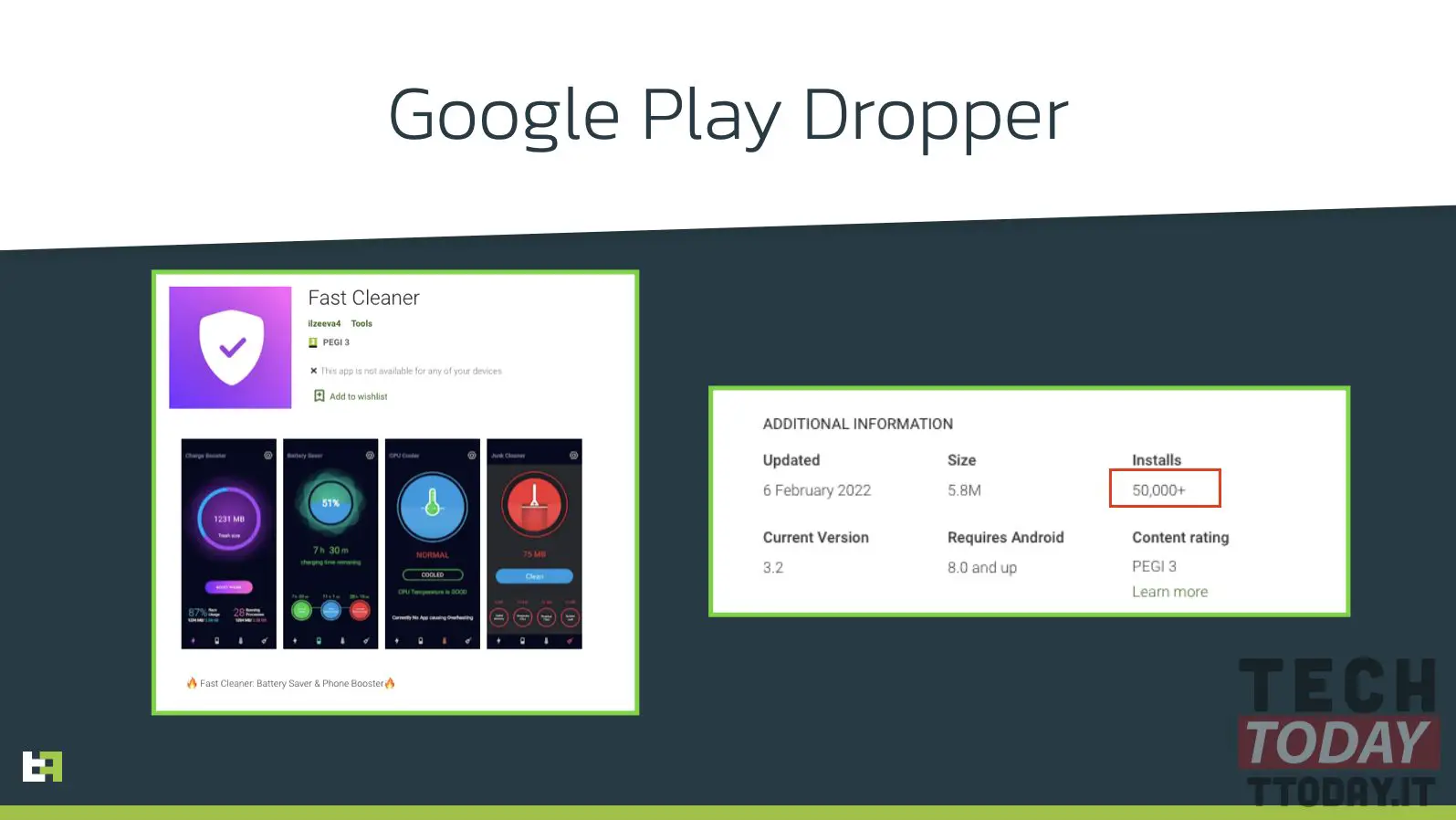
This is not the first time we talk about viruses and trojans. Unfortunately, the Android environment is full of them and users must be aware. Most of the time a virus enters our smartphone via applications. But how is that possible if the Play Store is Google safe? Well, there are holes. It is therefore appropriate to speak of Xenomorph, the new banking trojan which is sowing panic around the world. Italy included. Let's see the details together.
A new virus, or rather trojan, has been detected by ThreatFabric: it's called Xenomorph and it's a banking trojan that affects Android users
ThreatFabric cybersecurity researchers they found out a new trojan that targets Android users. Malware, nicknamed Xenomorph, steal sensitive financial information from banking apps and cryptocurrency wallets.
According to ThreatFabric, Xenomorph hides in the application FastCleaner available on Google Play, created to clean the device of “digital waste” and improve battery efficiency. The virus infected program was installed more di 50.000 times higher. Xenomorph not only collects data to make transactions, but also intercepts messages and allows hackers to take control of accounts of the victim.

According to reports, Xenomorph is in its early stages of development and is currently aimed at European Android users. In the malware target list, cybersecurity researchers found dozens of financial institutions in Spain, Portugal, Italy and Belgium, as well as crypto wallets and email apps. The 12 Italian apps connected to credit institutions that would be in danger are those of: Intesa Sanpaolo Mobile, YouApp, Banca Sella, MyCartaBCC, BNL, Carige Mobile, Banca MPS, Bancaperta, UBI Banca, SCRIGNOapp, BancoPosta e American Express.
ThreatFabric also noted that Xenomorph contains features that they do not allow you to uninstall it, so you may need to factory reset your smartphone to get rid of it.
Through | Cybersecurity360
Pictures | ThreatFabric








